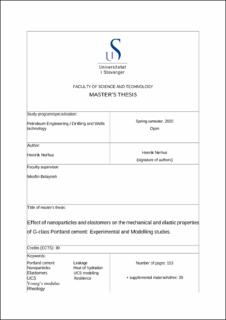| dc.description.abstract | Properly designed well structure in terms of load carrying capacity and appropriate materials used maintain the sustainability and the long-term structural integrity of the well. An important barrier for oil and gas wells is cement, and on the NCS the NORSOK-D010 has very specific requirements for the barrier material. Some of these properties include the barrier material being ductile, impermeable and resistant to damaging chemicals.[1] However, a study from 2001 shows that approximately 15% of primary cement jobs fail, costing the industry several hundreds of millions of dollars annually.[2] Additional studies show similar results, a study from 2006 shows that around 11% of well integrity issues on the NCS were due to cement related problems[3], around 14500 wells had fluid migration issues due to poor cement quality in Alberta [4] and a study from Pennsylvania showed that a large majority of the wells which experienced some sort of integrity or barrier issue, experienced cementing or casing failures[5]. These studies show that the cement used as barrier material does not always fulfill these requirements.
As nanomaterials continue to grow more useful in various industries, its benefits have also reached the oil and gas sector. Application of nanotechnology contributes to smarter and more efficient solutions to the technical challenges at hand and provides solutions to problems which conventional technology struggles with. In this thesis, several nanoparticles and elastomers have been tested as additives to cement slurries, to examine the benefits which can be achieved. A total of 17 different cement slurry batches were formulated, containing various concentrations of nanoparticles and rubber silicone. It was found that for all tested nanoparticles, the UCS increased with varying degrees given the right concentration added, with the largest increase observed from the addition of 0,26%bwoc of nano-silica which increased UCS by 36,9%. The vast majority of the analyzed slurries containing nanoparticles resulted in a cement with increased resilience. Additionally, it was found that the effects of nanoparticles vary greatly with the water to cement ratio, and that increasing the concentration of nanoparticles beyond a certain % generally resulted in decreased cement strength. The addition of rubber silicone was found to have a negative impact on cement strength in all cases but one, with a decreased resilience in all cases. Additionally, it was found that the addition of nanoparticles could greatly reduce fluid migration through cement. Using the measured data, an empirical UCS-Compressional wave velocity model was developed. Testing the model with data from literature shows a relatively good prediction of UCS based on the wave velocity. | en_US |

